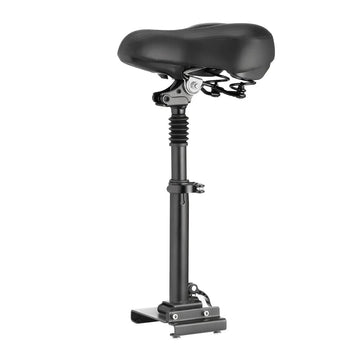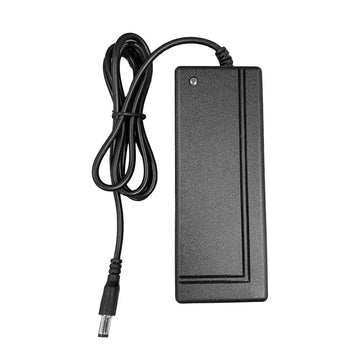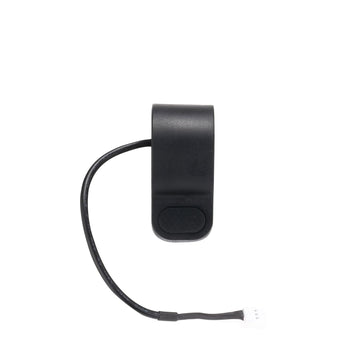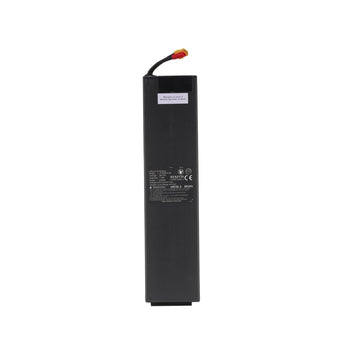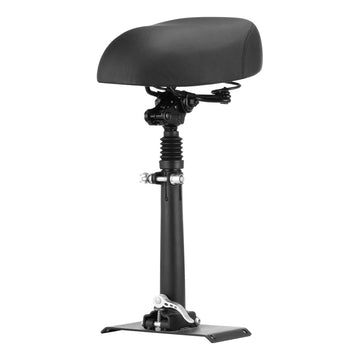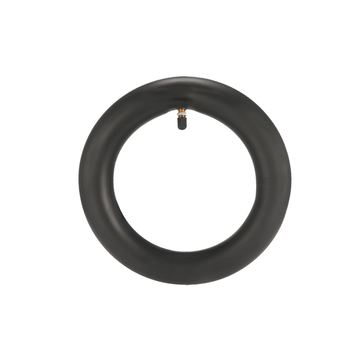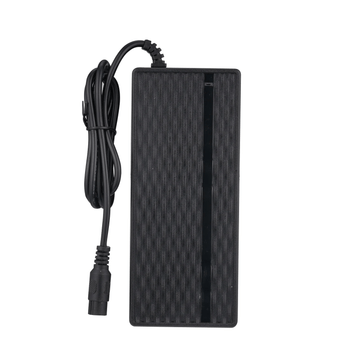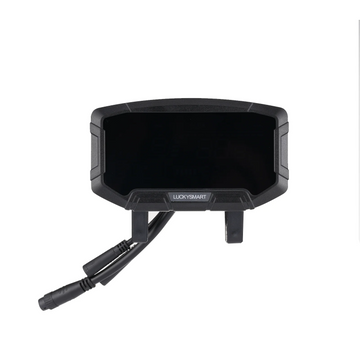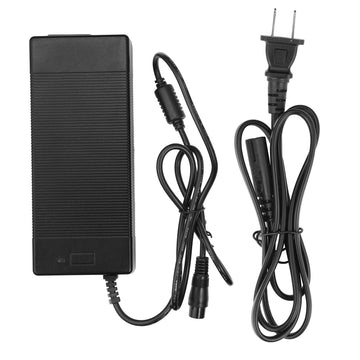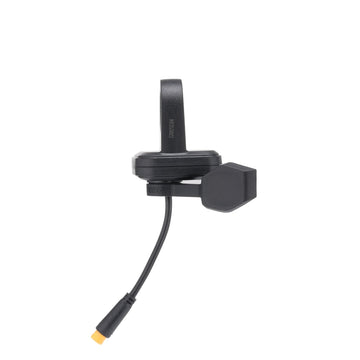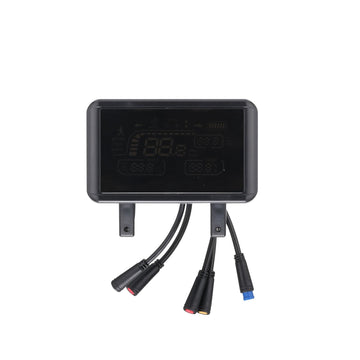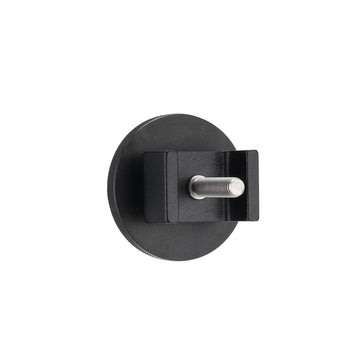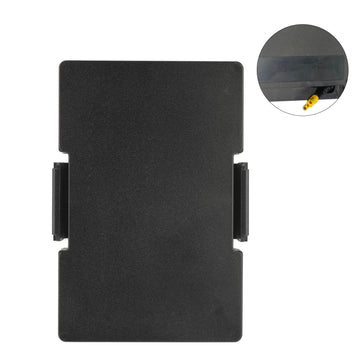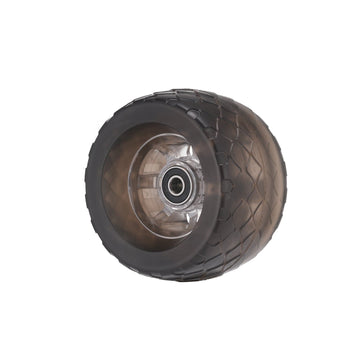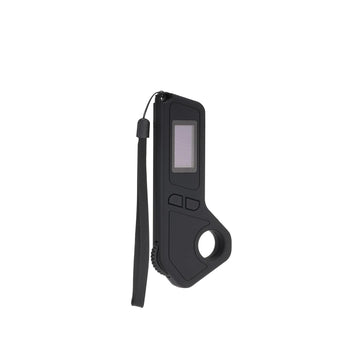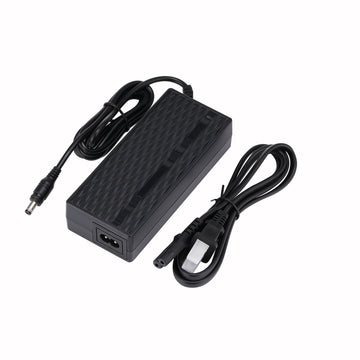
Hydraulic ebike brakes are an essential component of any electric bike. They provide a reliable and efficient braking system that ensures your safety while riding.
Unlike traditional bike brakes, hydraulic brakes use fluid to transfer force from the brake lever to the caliper, resulting in a more responsive and consistent braking performance.
In this article, we explore how hydraulic ebike brakes work and why they are so effective. Whether you're riding on tough mountain trails or busy city streets, knowing about these brakes can improve your biking experience.
Join us as we cover everything you need to know about hydraulic ebike brakes, including their benefits, how to install them, and how to maintain them.
What Are Hydraulic eBike Brakes?
Hydraulic brakes on an electric bike (eBike) employ hydraulic fluid to transfer power from the brake lever to the brake pads, which subsequently compress against the wheel rim to slow the bike. The fluid system is pressured and sealed, and when the brake lever is released, the fluid pressure shifts, forcing the brake pads against the braking surface.
Components of Hydraulic Brakes
Hydraulic eBike brakes consist of three main components: the lever, the caliper, and the hydraulic hose. The lever is where you apply pressure to activate the brake, while the caliper houses the brake pads and squeezes the rotor to slow down the bike. The hydraulic hose connects the lever to the caliper and carries the pressurized fluid that powers the system.
Hydraulic vs Mechanical Brakes
The main difference between hydraulic and mechanical brakes is the way they transfer force from the lever to the caliper.
Mechanical brakes use a cable to activate the caliper, while hydraulic brakes use a pressurized fluid. This means that hydraulic brakes require less force to activate and provide greater modulation, allowing you to apply just the right amount of braking power.
Another advantage of hydraulic brakes is that they require less maintenance than mechanical brakes. While mechanical brakes require regular adjustments to ensure proper alignment and tension, hydraulic brakes are self-adjusting and require little to no maintenance.
Advantages of Hydraulic Brakes on E-Bikes

Hydraulic brakes are increasingly becoming the standard for high-performance e-bikes, offering superior stopping power and reliability compared to traditional mechanical disc brakes. In this section, we will explore the advantages of hydraulic brakes on e-bikes, backed by the impressive lineup of products.
1. Enhanced Stopping Power
One of the most significant advantages of hydraulic brakes is their superior stopping power. Hydraulic brakes offer more consistent braking power, which means that you can stop your e-bike quickly and safely in any situation.
This is especially important when you're riding at high speeds or in wet or slippery conditions. With hydraulic brakes, you can be confident that you will have the stopping power you need to stay safe on the road.
2. Better Modulation and Control
Hydraulic brakes offer better modulation and control than mechanical disc brakes. This means that you can easily adjust the amount of braking force you apply to your e-bike.
hydraulic brakes, you can apply more or less braking force depending on the situation, which allows for more responsive braking. This is especially important when you're riding downhill or in tight corners, where you need to be able to modulate your braking force quickly and accurately.
3. Reduced Maintenance Needs
Hydraulic brakes require less maintenance than mechanical disc brakes. This is because hydraulic brakes are self-adjusting and don't rely on cables, reducing adjustment needs.
Additionally, hydraulic brakes are less prone to wear and tear, which means that they last longer and require less maintenance over time. With hydraulic brakes, you can spend more time riding your e-bike and less time maintaining it.
How to Choose the Best Hydraulic eBike Brakes

When it comes to choosing the best hydraulic eBike brakes, there are several factors that you should consider.
Here are some of the most important factors to keep in mind:
1. Riding Style
Your riding style plays a crucial role in determining the type of hydraulic eBike brakes that are best suited for your needs. If you're an aggressive rider who likes to tackle steep descents and technical trails, you'll need brakes that offer powerful stopping power and excellent modulation. On the other hand, if you're a more casual rider who sticks to flat or rolling terrain, you may not need brakes that are quite as powerful.
2. Terrain
The terrain you ride on also plays a significant role in determining the type of hydraulic eBike brakes that are best for you. If you ride on steep, technical terrain with lots of rocks and roots, you'll need brakes that can handle the extra stress and provide reliable stopping power. On the other hand, if you ride on smoother, less challenging terrain, you may be able to get away with brakes that aren't quite as powerful.
3. Budget
Your budget is another important consideration when choosing hydraulic eBike brakes. While there are plenty of high-end options available that offer excellent performance, they can be quite expensive. If you're on a tight budget, you may need to compromise on some features to find a set of brakes that meets your needs without breaking the bank.
4. Brand Reputation
Brand reputation is also an important factor to consider when choosing hydraulic eBike brakes. Stick with well-known brands that have a proven track record of producing high-quality, reliable brakes. This will help ensure that you get a set of brakes that will last for years to come and provide consistent performance.
How to Install Hydraulic eBike Brakes
Installing hydraulic brakes on your eBike can be a great way to improve your stopping power and make your ride safer. Here is a step-by-step guide on how to install hydraulic brakes on your eBike:
Tools Needed
Before you start, you will need the following tools:
- Hydraulic brake kit
- Allen wrenches
- Torque wrench
- Cable cutters
- Bleed kit (optional)
Precautions
Before installing your new brakes, make sure you take the following precautions:
- Wear protective gear, including gloves and eye protection.
- Make sure your eBike is securely mounted and cannot move or fall over during the installation process.
- Disconnect the battery to prevent accidental activation of the motor.
Installation
- Remove the old brake calipers and brake levers from your eBike. This may require loosening bolts with an Allen wrench.
- Install the new brake calipers onto your eBike using the bolts provided in the hydraulic brake kit. Tighten the bolts to the manufacturer's recommended torque using a torque wrench.
- Install the new brake levers onto your handlebars using the bolts provided in the hydraulic brake kit. Adjust the reach of the brake levers to your preference, if possible.
- Install the new brake pads into the calipers. Make sure they are properly aligned and secure.
- Connect the brake hoses to the calipers and brake levers. Use cable cutters to trim the hoses to the appropriate length, if necessary.
- Bleed the brake system, if necessary, using a bleed kit and following the manufacturer's instructions.
Maintenance Tips for Hydraulic eBike Brakes
Hydraulic eBike brakes are a crucial component of your electric bike, and proper maintenance is essential to ensure optimal performance and longevity.
Here are some tips to help you maintain your hydraulic eBike brakes:
1. Regular Inspection
It's important to inspect your hydraulic eBike brakes regularly to ensure they're working correctly. Check the brake pads, rotors, and brake lines for any signs of wear or damage. If you notice any issues, address them immediately to prevent further damage or safety concerns.
2. Fluid Replacement
Brake fluid is an essential component of hydraulic eBike brakes, and it's essential to replace it regularly. Follow the manufacturer's recommendations for fluid replacement intervals. Also, make sure to use the correct type of brake fluid for your system. Mixing different types of brake fluid can cause damage to your brakes.
3. Brake Pad Replacement
Brake pads are another crucial component of hydraulic eBike brakes, and it's important to replace them when they become worn. Inspect your brake pads regularly and replace them if you notice any signs of wear. Worn brake pads can reduce braking power and cause safety concerns.
4. Cleaning and Lubrication
Regular cleaning and lubrication of your hydraulic eBike brakes can help maintain optimal performance. Clean your brake components regularly to remove dirt, debris, and moisture. Lubricate moving parts to ensure smooth operation and prevent corrosion.
Fixing Common Issues with Hydraulic eBike Brakes
As with any mechanical system, hydraulic eBike brakes can experience issues that require fixing. Here are some common problems that you might face with hydraulic eBike brakes and their solutions:
Leaking Fluid
If you notice fluid leaking from your hydraulic eBike brakes, you should address the issue immediately. Leaking fluid can cause your brakes to fail, which can be dangerous. Here are the steps to fix this issue:
-
Check the brake lines and connections for any signs of damage or wear. If you see any damage or wear, replace the affected parts.
-
Tighten any loose connections with a wrench. Be careful not to overtighten the connections, as this can cause damage.
-
Bleed the brakes to remove any air bubbles that may have entered the system. This will ensure that the brakes are working properly.
Air in the Brake Lines
Air in the brake lines can cause your hydraulic eBike brakes to feel spongy or unresponsive. Here's how to fix this issue:
-
Check the brake lines and connections for any signs of damage or wear. If you see any damage or wear, replace the affected parts.
-
Bleed the brakes to remove any air bubbles that may have entered the system. This will ensure that the brakes are working properly.
Worn-Out Brake Pads
Over time, the brake pads on your hydraulic eBike brakes will wear down and need replacing. Here's how to replace them:
-
Remove the wheel from your eBike.
-
Remove the retaining clip or pin that holds the brake pads in place.
-
Slide the old brake pads out of the caliper.
-
Insert the new brake pads into the caliper.
-
Replace the retaining clip or pin.
-
Reinstall the wheel.
Electric Bike with Hydraulic Brakes from IsinWheel
IsinWheel's electric bikes with hydraulic brakes are designed to be both comfortable and efficient. They offer a smooth and effortless riding experience that is perfect for commuting, touring, or just enjoying a leisurely ride.
1. isinwheel U2 Electric Cruiser Bike
The isinwheel U2 Electric Cruiser Bike is a 26-inch electric cruiser bike for adults with a 500W rear-drive motor and a maximum speed of 20 mph. It features a 36V, 13Ah battery that allows it to travel up to 45 kilometers on a single charge with pedal assist. The bike also has 26-inch puncture-resistant tires, twin shock absorbers, a 7-speed transmission, dual disc brakes, and a lighting system.
Related Posts:
Conclusion
In conclusion, hydraulic ebike brakes are an essential component of any electric bike, providing reliable and effective stopping power for enhanced riding safety and performance. As discussed in this article, choosing the right hydraulic ebike brakes can make a significant difference in your overall riding experience and safety.
One of the main advantages of hydraulic ebike brakes is their superior stopping power compared to traditional mechanical disc brakes. This is due to the fluid-filled system that creates the necessary pressure to amplify the force applied when you pull the brake lever. This results in more precise control and easy modulation, allowing for quick and efficient braking when needed.
Another benefit of hydraulic ebike brakes is their reduced maintenance requirements. Unlike mechanical disc brakes, hydraulic brakes do not require regular adjustments or cable replacements, making them a more cost-effective and hassle-free option in the long run.
When choosing hydraulic ebike brakes, it is important to consider factors such as compatibility, durability, and reliability. You should also ensure that the brakes are properly installed and adjusted for optimal performance and safety.
Frequently Asked Questions
What type of brakes are best on an ebike?
The best type of brakes for an ebike depends on your personal preferences and riding style. However, hydraulic brakes are generally considered to be the best option for high-performance ebikes. They offer superior stopping power, better durability, and less maintenance compared to traditional mechanical disc brakes.
Are hydraulic brakes better on an ebike?
Hydraulic brakes are generally considered to be better on an ebike. They offer superior stopping power and better durability compared to mechanical disc brakes. Additionally, they are less prone to wear and tear, which means they require less maintenance over time.
Do Ebikes need special brakes?
Ebikes do not necessarily need special brakes, but they do require high-performance brakes that can handle the added weight and speed of an electric motor. Hydraulic brakes are generally the best option for high-performance ebikes, but mechanical disc brakes can also be a good choice for budget-conscious riders.
What's better, hydraulic or disc brakes?
Hydraulic brakes are a type of disc brake, so it's not accurate to compare them as if they are two different things. However, hydraulic disc brakes are generally considered to be better than mechanical disc brakes. They offer superior stopping power, better durability, and less maintenance compared to mechanical disc brakes.
Do hydraulic brakes need brake fluid?
Yes, hydraulic brakes require brake fluid to operate. The fluid is used to create pressure in the brake system, which in turn applies the brake pads to the rotor to slow down or stop the bike. It's important to flush the brake fluid and replace it every year or so to ensure the brakes continue to function properly.
How do hydraulic brakes work on e-bikes?
Hydraulic brakes on e-bikes use fluid pressure to activate brake calipers, pressing pads against the rotor to create friction and slow the bike down.
Do hydraulic bike brakes need maintenance?
Yes, hydraulic bike brakes require maintenance, including bleeding the lines, replacing brake pads, and inspecting for leaks or damage to ensure optimal performance.
Recommended Articles To Read
- What is The Best Electric Bike?
- What Is an eBike and Why is it Gaining Popularity?
- What Is a Pedal Assist eBike? Basic Features and Benefits
- Ebike Sizes: The Ultimate Guide to a Comfortable Ride
- How Fast Does a 500W Electric Bike Go?




























